4Wall In The News
4Wall Supplies LD Allen Branton with Lighting Rental Package for Rock & Roll Hall of Fame Show
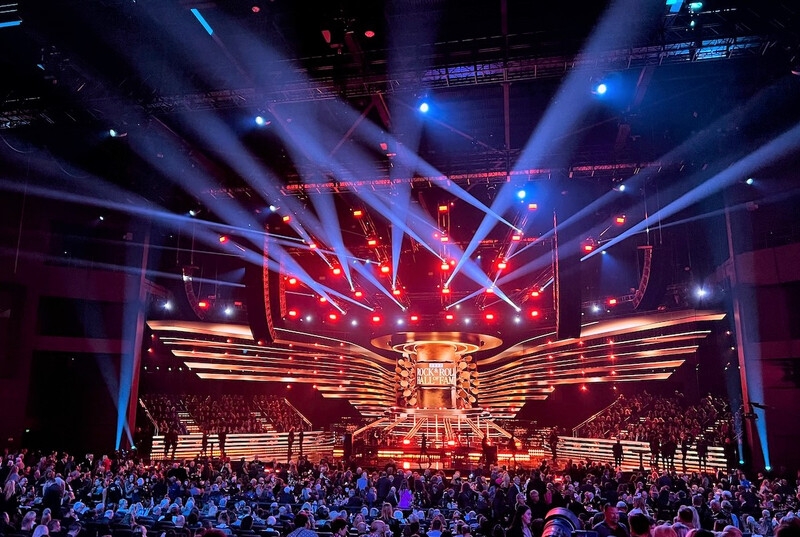
4Wall provided Lighting Designer Allen Branton with over 500 light fixtures for the 37th Annual Rock & Roll Hall of Fame Show. The massive event took over the Microsoft Theatre in Los Angeles, CA in November and aired on HBO.
This press release was originally posted by CHAUVET Professional on PLSN's website here.
When Allen Branton and the rest of the production team saw their design concept for the 2022 Rock & Roll Hall of Fame Induction in place at the Microsoft Theater, their first reaction was something along the lines of "wow, this feels really modern!"
This might have come as a surprise to some, given that the annual extravaganza on HBO was set to honor legendary rock artists, most of whom have been on the scene for 25 years or more, but as Branton, the show's Lighting Designer, points out "we are beyond treating this as a period piece. This event is 100-percent a celebration of Rock and Roll and what it has meant to all of us and the world."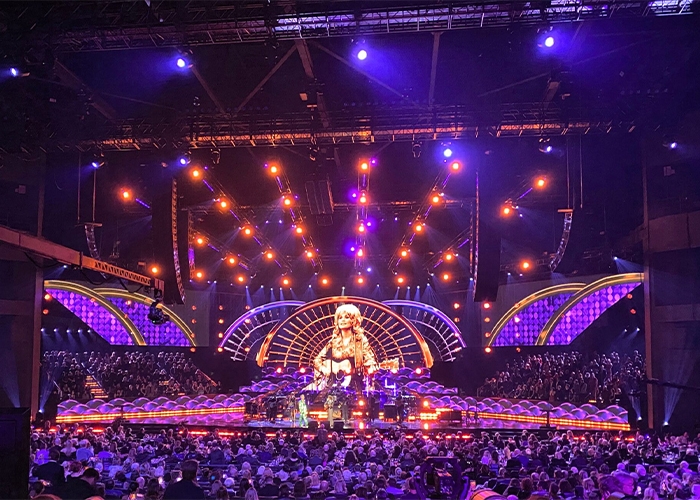
Energized by sleek geometric scenic elements, and a massive curved, blow-through video wall that seamlessly blended light sources and images, along with plenty of reality-bending mirrored surfaces, the immersive production was anything but retro looking. "Designs evolve with time and technology, so the designs we create regularly introduce new elements," said Branton, who has served as the lighting designer on 20 pervious Rock & Roll Hall of Fame Inductions ceremonies.
Working with Scenic Designer Bruce Rodgers and Video Designer Bianca Moncada, Branton collaborated on a production that would have been unimaginable not that long ago. Continuously changing the configuration of the video imagery, along with the intensity and character of light that shined through it, the design team was able to create an impressively wide array of panoramas for the star-studded program.
"There were times when the blow-through screen vanishes, and others when its imagery was dominant," said Branton. "We had so much show to program that we needed a great deal of variation in terms of looks. This year's honorees naturally invited the show to be taken in many directions."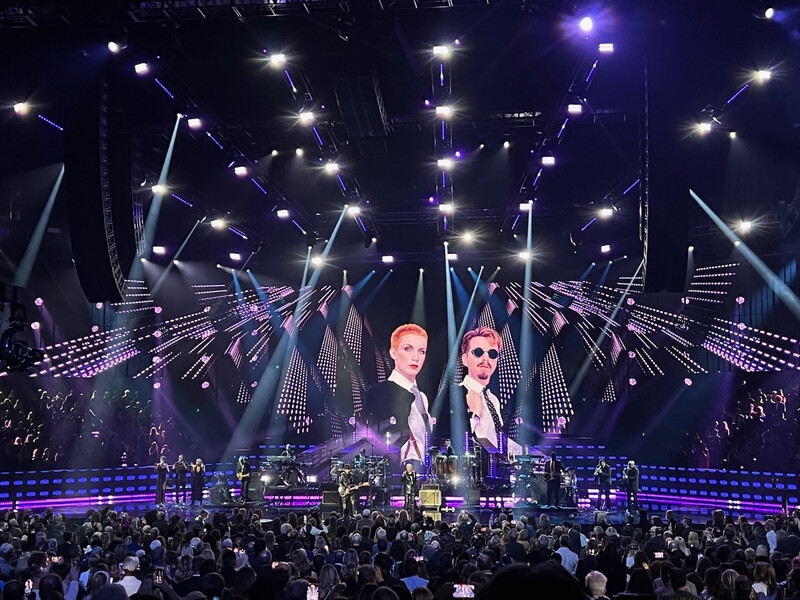
Helping the overall design achieve this level of versatility for the diverse group of honorees, which included Pat Benatar, Neil Giraldo, Duran Duran, Eminem, Eurythmics, Dolly Parton, Lionel Ritchie and Carly Simon, as well as Judas Priest, Jimmy Jan and Terry Lewis, Harry Belafonte and Elizabeth Cotton, was Branton's artful use of a flexible 4Wall Entertainment supplied lighting rig that featured 55 Maverick MK3 Wash, 61 Color STRIKE M, 38 COLORdash Accent 3, and 24 Rogue R1 BeamWash fixtures from CHAUVET Professional
Branton worked with Lighting Directors Felix Peralta, Kevin Lawson, and Darren Langer, to expand the range of engaging looks in the broadcast, commenting, "we always look forward to this project. How could you not? The level of legendary, world-class talent gathered on the same stage brings out the best in everyone. I believe it's critically important, especially when working in broadcast concert, that you design from the ground up. You can't concern yourself only with the looks in the air and ignore what's on the ground. When you do this, I believe it is disconcerting for the TV viewers, who are seeing most shots straight ahead at eye level. With a rig-down approach, it becomes almost as if there are two shows on the TV screen."
To address this, Branton was careful to ensure that the area directly above the deck was adequately addressed. For example, he made sure that his lighting hit the lower edges of the blow-through video wall. This not only created harmonious image on the TV screen, but it also blurred the distinction between lighting and video, and made it hard to see where the stage deck ended and the blow-through wall began, which together combined to create a more all-embracive environment on stage.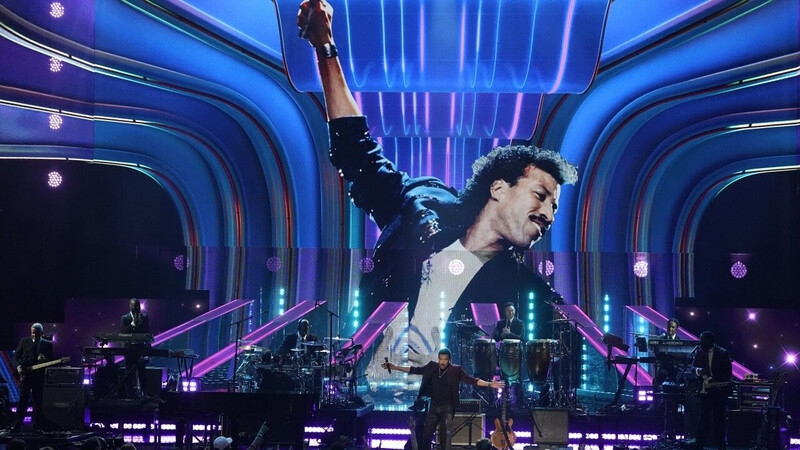
As part of his bottom-up design philosophy, Branton repeated looks at different eye levels. This could be seen in how he used the rig's Color STRIKE M motorized strobes. Most of these units were positioned on the spoke truss that extended out over the stage, but others were arranged on the deck below the blow-through screen so they could create corresponding lower-level looks, mirroring the aerial effects.
"The Color STRIKE Ms were the dominant fixtures on the spokes," said Branton. "We added them to the rig at the suggestion of Felix Peralta, who had used them in a tour design. "They didn't disappoint. We used them for all sorts of things from melting the whole stage in intense white light - this is a rock show, after all - to creating more subtle scenic effects. By coordinating the looks from the spokes with those on the deck, we got the bottom-up approach that I believe in.
Branton also conjured up a wide range of looks with his Maverick MK3 Wash fixtures, which were positioned behind the blow-through walls. "We selected this fixture because we wanted an emphatic, single fixture story behind the video walls," he said. "At times we had full bright white in-your-face light, while at others we just used a single pixel to create delicate effects that blended with the imagery being shown on the screen."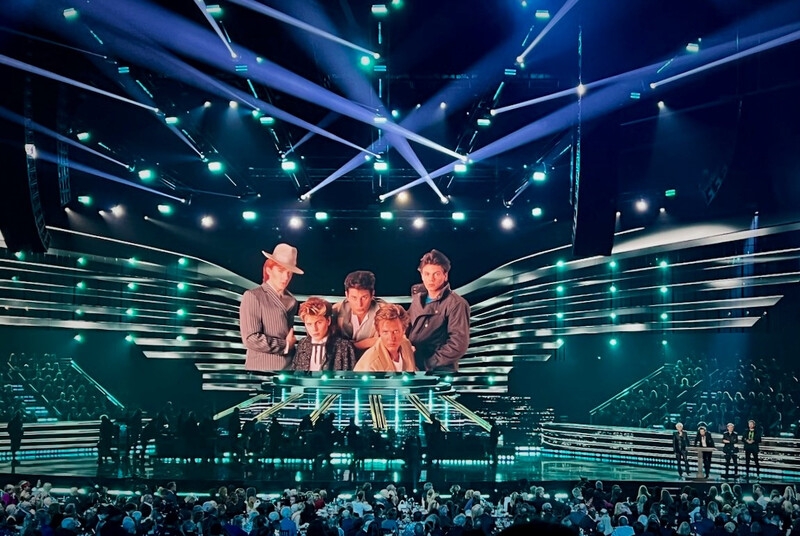
The video wall at this year's Rock & Roll Hall of Fame Induction was far more transparent than the one used in the 2021 event. This opened more opportunities to collaborate with Moncada, playing light and video off one another. Adding to the imagery of the background, a second non-transparent wall was used on center to float hi-res images of legendary stars, such as 2022 inductee Carly Simon, when contemporary artists Olivia Rodrigo and Sara Bareilles performed her hits on stage. Other guest stars (non-honorees) in the show included Mary J. Blige, Gwen Stefani, Ed Sheeran, Bruce Springsteen, Lenny Kravitz, and more.
"A few weeks before the show, we received the semi-final song list," said Branton. "Bianca and her team at Darmah published digital concept boards, then we created palettes, and complimentary compositions based on that, sometimes matching the colors, sometimes creating contrasts to them. It was a process of ongoing collaboration.
"All of us involved in this project soberly understood how fast this process had to work," continued Branton. "Keep in mind, we walked into a naked arena on Sunday, and were ready for camera on Thursday, then did the show on Saturday. The permanent seats in the theatre even had to be removed from VIP table space to make this show happen. Gary Lanvy's teams spent 24 hours a day on site for the first two days. I can't say enough good things about 4Wall, especially Alex Flores, and the job they did in prepping the system and creating a build plan, bringing us to "camera-ready" in 72 hours."
The final result of this collaborative effort didn't look like much when it was first hung at the Microsoft Theater, illuminated only by house lights. "Frankly, it looked like a bunch of milk cartons floating in the air," Branton laughed, adding that "things changed dramatically," once the system was turned on. At that point everyone in the theatre and watching on television could see just what kind of magic modern technology can create in the hands of a talented design team.
